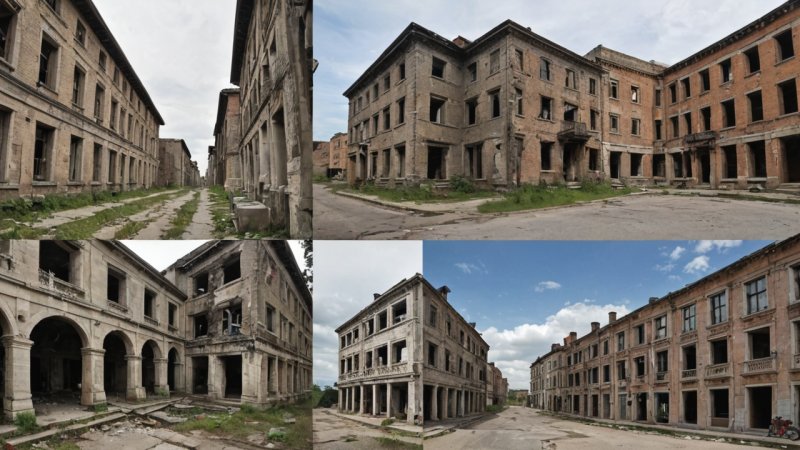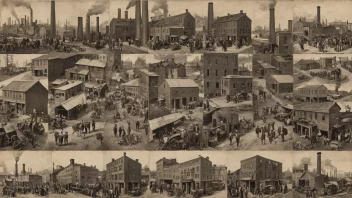As travel enthusiasts seek to immerse themselves in the culture and history of a destination, two distinct approaches have gained popularity: urban exploration and traditional tourism. Both methods offer unique experiences and insights into the past, but they differ significantly in their approach and impact on historical preservation. This article will compare urban exploration and traditional tourism, examining their pros and cons, and how they contribute to the preservation of history.
Definition and Approach
Urban exploration, often abbreviated as urbex, involves the exploration of abandoned or off-limits structures, including factories, schools, and historic buildings. Enthusiasts seek to uncover hidden histories and document their findings through photography and storytelling. On the other hand, traditional tourism focuses on visiting well-maintained historical sites, museums, and landmarks that are often marketed to the public.
Impact on Historical Preservation
One of the core differences between urban exploration and traditional tourism lies in their impact on historical preservation. Urban explorers often advocate for the preservation of forgotten or neglected sites by bringing attention to their stories and significance. Through their documentation, they can spark interest in these locations, encouraging preservation efforts by local communities and governments.
In contrast, traditional tourism can support preservation through funding and maintenance. Popular tourist sites often receive financial resources for upkeep, restoration, and educational programs. However, this can lead to commercialization, where the authenticity of the site may be compromised to cater to tourist demands.
Pros of Urban Exploration
- Authenticity: Urban exploration allows travelers to experience history in its raw form, providing a genuine connection to the past without the filters of commercialization.
- Awareness: Explorers often raise awareness about neglected sites, potentially leading to preservation initiatives or local interest in conserving these locations.
- Community Building: The urban exploration community fosters connections among like-minded individuals who share a passion for history and adventure.
Cons of Urban Exploration
- Legal Risks: Many urban exploration sites are privately owned or deemed unsafe, which can lead to trespassing charges and potential injury.
- Environmental Impact: Some explorers may inadvertently cause damage to fragile structures, jeopardizing their historical integrity.
- Ethical Concerns: The act of exploring abandoned sites can raise ethical questions about the respect owed to these spaces and their histories.
Pros of Traditional Tourism
- Accessibility: Traditional tourism offers well-marked and accessible locations, making it easier for travelers to learn about history without risking safety.
- Structured Learning: Guided tours and educational programs provide in-depth knowledge about historical sites, enhancing the travel experience.
- Economic Support: Tourist attractions contribute to local economies through job creation and funding for preservation projects.
Cons of Traditional Tourism
- Overcrowding: Popular sites can become overcrowded, detracting from the experience and making it challenging to appreciate the site's significance.
- Commercialization: The pressure to cater to tourists can lead to the commercialization of historical sites, potentially distorting their true essence.
- Neglect of Lesser-Known Sites: Traditional tourism often overlooks smaller, lesser-known historical locations, which may remain unpreserved and forgotten.
Case Studies: Urban Exploration and Traditional Tourism
To illustrate the differences between these two approaches, let’s examine a couple of case studies. The abandoned City Hall subway station in New York City is a popular urban exploration site. This hidden gem, with its ornate architecture, tells a story of the city’s past that many tourists might miss. Urban explorers have documented its beauty, which has led to discussions about potential preservation efforts.
Conversely, the historic Alhambra in Granada, Spain, is a prime example of traditional tourism. This UNESCO World Heritage Site attracts millions of visitors each year, and its revenues are reinvested into preservation and maintenance. The site’s popularity raises awareness about its historical significance, but it also faces challenges with overcrowding and commercialization.
Conclusion
In conclusion, both urban exploration and traditional tourism offer valuable insights into historical preservation, each with its advantages and disadvantages. Urban exploration provides a more authentic experience and can spark interest in neglected sites, but it comes with legal and ethical considerations. Traditional tourism, while structured and safe, can lead to commercialization and neglect of lesser-known historical locations. For travelers looking to immerse themselves in history, a balanced approach that incorporates both methods may be the most enriching way to appreciate and preserve our shared heritage.






